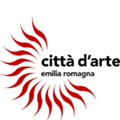- Tourist locations
- Art and culture
- Nature and environment
- Routes and tours
- People, history, traditions
Città romana di Mevaniola
 The archaeological site of the Roman town of Mevaniola has been
excavated several times by the Emilia-Romagna Archaeological
Office. Of the Roman town are still visible some structures of the
public baths, the theatre built in the characteristic
Greek-hellenistic style and a small cistern.
The archaeological site of the Roman town of Mevaniola has been
excavated several times by the Emilia-Romagna Archaeological
Office. Of the Roman town are still visible some structures of the
public baths, the theatre built in the characteristic
Greek-hellenistic style and a small cistern.
Address: 47010 Galeata (FC), Italia
Telephone number: Comune di Galeata - Ufficio Cultura
+39.0543.975424
Mail: cultura@comune.galeata.fc.it
Fax: +39.0543.975424
How to get there
Galeata is 34 kilometres from Forlì along the 4 Bidente provincial road. Driving towards Santa Sofia take the old carriageway between Galeata and Pianetto and then turn right into the pathway towards Canova - Basino until you reach on foot the archaeological area.
Analytical text
The remains of the Roman town of Mevaniola are situated on a
fluvial terrace to the north of the village of Pianetto. The
archaeological area is bordered by the creek Rio Secco, where tomb
furnishings from 6th century have been brought to light, and by the
creek Catenacciano.
It is believed that the area around Mevaniola in pre-roman age was
inhabited by Umbrian populations. This appears to be confirmed by
the fact that the territories of Mevaniola and Sarsina, according
to the evidence of Pliny the Elder, were annexed into the 6th
Augustean region called Umbria and not to the 8th region called
Aemilia, as was the case with Forum Livii and Forum Popili. Little
is known of the Romanisation and of the first stages of life of the
centre. The excavations have indeed identified structures mainly
dating back to the late Republican history (1st century b.C.).
All the uncovered public buildings seem to be organized around a
pathway cutting through the archaeological area and surely
reflecting the course of an important street of the town (probably
the main street called Decumanus Maximus). Walking up the pathway
we can see on the left some older structures thought to be the
public baths, partially excavated around the 60's, preserving today
a rectangular space with a semicircular structure (a bath?)
probably belonging to the heated area. The excavations of the baths
have brought to light a mosaic inscription from the middle of the
1st century b.C., displayed today at "Mons. Domenico Mambrini"
Civic Museum, recording the reconstruction of hot water systems.
Apart from the peculiarity of the writing technique, the mosaic is
interesting because it confirms the presence in Mevaniola of the
gens Caesii, a family playing a prestigious role in many Umbrian
municipia (Mevania, Sassina etc.) and allows to trace back the
development of the Romanisation process in Italy (F. Cenerini).
To the north-west of the bath system (on the right of the pathway)
was the forensic area (now buried) with a rectangular square
(approx. 60 x 36,5 metres) paved with sandstone slabs and reliefs
of red marble from Verona. On a shorter side, to the east of the
forum, stood probably the rectangular basilica (approx. 15 x 35
metres). In an area north of the forum was found, during the
excavations in 1951, a 24 cm. long key from the 1st century b.C.
with an iron body and a bronze handle in the shape of a Molossian
dog head representing a unique specimen in Roman Italy.
The Roman forum was dominated by the small theatre (1st century
b.C.) reflecting Greek-hellenistic architectural patterns (with a
huge round dancing floor called the orchestra facing a rectilinear
stage and passages going from one side to the other) and perhaps
used for public meetings given the proximity to the forensic area.
The only surviving elements of the theatre are three flight of
steps in the cavea, the upper ones being supported by an earth
embankment or made of wood structures. Beside the theatre is a
square cistern used for collecting water.
The name Mevaniola brings to mind the ancient Mevania, known today
as Bevagna in Umbria, but the lies between the two towns and the
two toponyms are still unclear.
News
In the bath area was discovered the floor mosaic of Cesius (1st
century b.C.) which is now exhibited at "Mons. Domenico Mambrini"
Civic Museum.
All the implements recovered from the excavations or after
occasional finds of Roman artefacts are displayed at the Civic
Museum in a room dedicated to the Roman town.
Opening time
The site is not open to the public - For guided tours phone the Arts and Culture Office of Galeata City Council.
Back to previous page
Comune di Forlì - Piazza Saffi, 8 47121 Forlì
PEC: comune.forli@pec.comune.forli.fc.it - P.Iva: 00606620409
A cura della Redazione di Turismo Forlivese, Piazza Saffi 8, 47121 Forlì - iat@comune.forli.fc.it - Tel. 0543 712362













